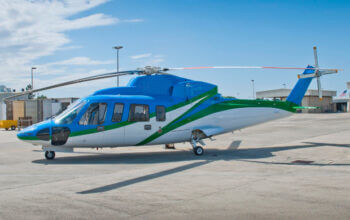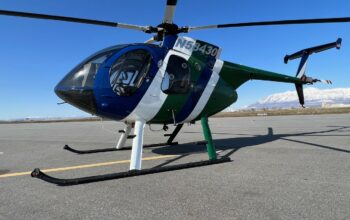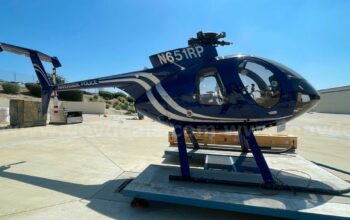A failed bearing led to the recent loss of tail rotor control in a Sikorsky S-92 helicopter operating in the North Sea, according to the U.K. Air Accidents Investigation Branch (AAIB).
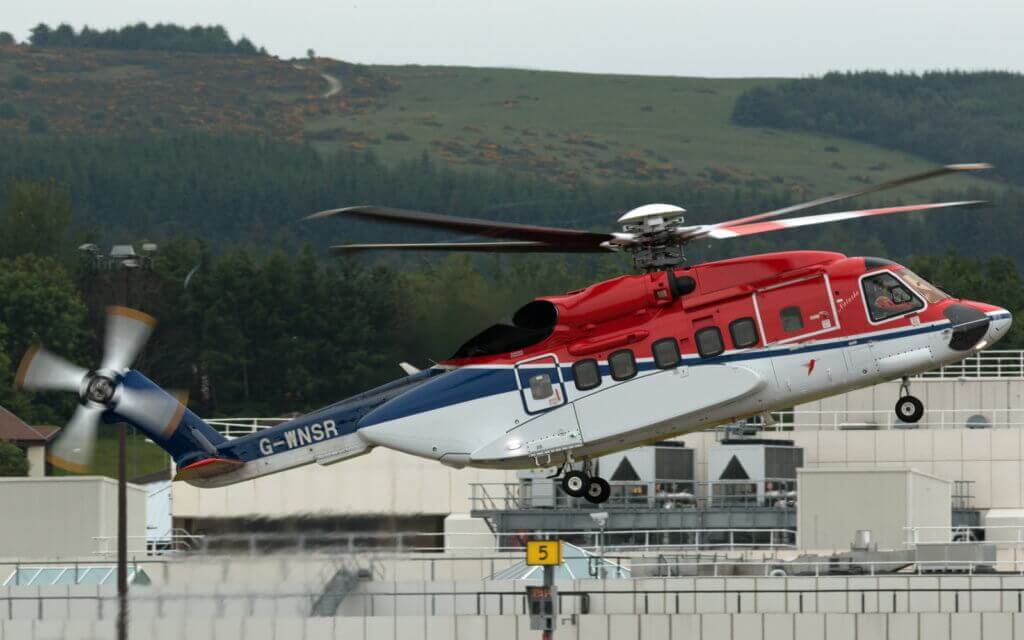
In a special bulletin published on Jan. 11, the AAIB reported that the S-92’s tail rotor pitch change shaft (TRPCS) double row angular contact bearing was found in a “severely distressed condition” with signs of overheating and extreme wear.
Investigators found that the barrel-shaped rollers of the bearing had seized to the inner member, while the outer race roller had excessive play, sufficient to impart a torsional load to the tail rotor servo.
This torsional load caused the primary piston rod to fracture inside the servo, leading to the separation of the secondary piston sleeve and subsequent total loss of tail rotor control, the AAIB stated.
No one was injured in the incident, which occurred as the S-92 operated by CHC was landing at the West Franklin wellhead platform in the North Sea on Dec. 28, 2016.
As described in the AAIB bulletin, as the aircraft was descending to land on the West Franklin helideck, it yawed rapidly to the right while approximately four feet above the surface. At the same time it rolled left, causing the left main landing gear to contact the helideck as the aircraft continued to yaw.
The S-92 rotated through more than 180 degrees before the crew was able to land it on the helideck and shut it down. It was subsequently removed from the helideck by crane and transported on a ship back to its base in Aberdeen, Scotland.
Initial analysis of the helicopter’s health and usage monitoring system (HUMS) data indicates that the failure of the bearing was rapid, with only 4.5 hours of elapsed flight time from the first exceedance of the relevant bearing condition indicator to complete failure.
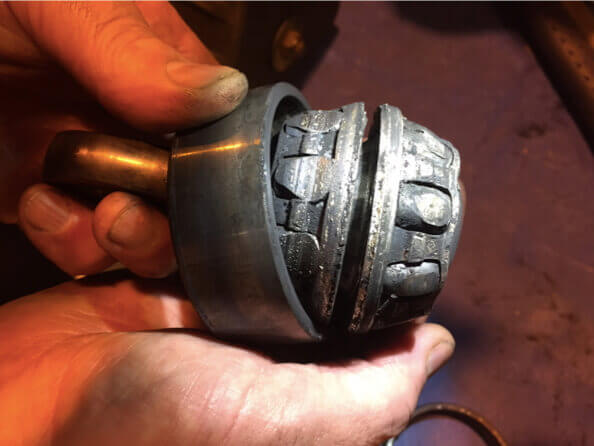
The failing bearing may have caused an uncommanded yaw earlier in the accident flight. The AAIB bulletin notes that the S-92’s commander and co-pilot experienced about 45 degrees of unanticipated right yaw while lifting off from another offshore helideck nearby.
The crew landed the aircraft, but decided that local turbulence was the likely cause of the yaw. The commander lifted off for the second time without incident and continued to the West Franklin platform, around three nautical miles to the south, where the complete loss of tail rotor control occurred.
The incident prompted Sikorsky to issue an alert service bulletin on Jan. 10, requiring operators to perform a one-time inspection of the TRPCS and bearing assembly for ratcheting, binding, or rough turning. The manufacturer is also requiring operators to use S-92 HUMS ground station software to review tail rotor gearbox condition indicators on a reduced flight hour interval.
According to the AAIB, since 2007, there have been two other events in which degradation of the TRPCS bearing led to reduced tail rotor control in flight, causing the flight crews to make immediate landings. The more recent of those events prompted the U.S. Federal Aviation Administration to issue an emergency airworthiness directive in November 2016, requiring inspections of the TRPCS assembly.
In the case of the incident on Dec. 28, “at this early stage of the investigation, the helicopter manufacturer is not clear whether this bearing degradation is the result of a new root cause, or a previously unidentified failure mode,” the AAIB reported.
In a written statement, Sikorsky said it will further communicate findings to customers as the investigation progresses.
“We greatly appreciate the U.K. Air Accidents Investigation Branch’s work to understand this issue, and we will continue to support the ongoing investigation by the AAIB along with the [National Transportation Safety Board], as well as our customer, into the root cause of the suspected TRPCS bearing failure. Safety remains our highest priority, and operators are reporting compliance and completion of the inspections we required in our Jan. 10 alert service bulletin and are returning their S-92 aircraft to service,” the company stated.







